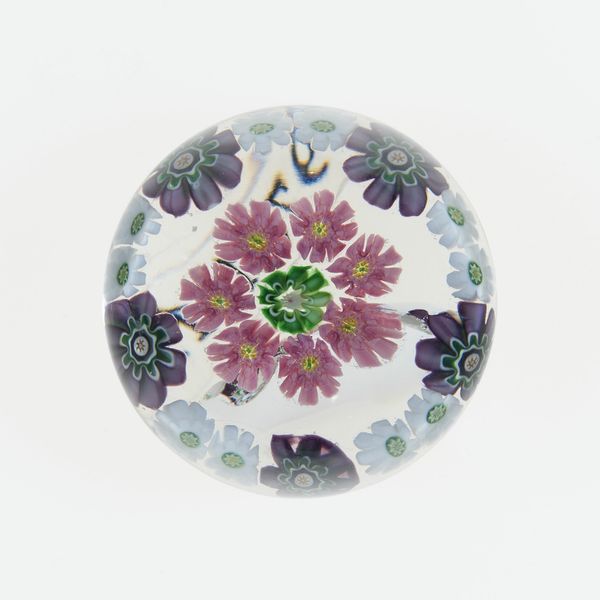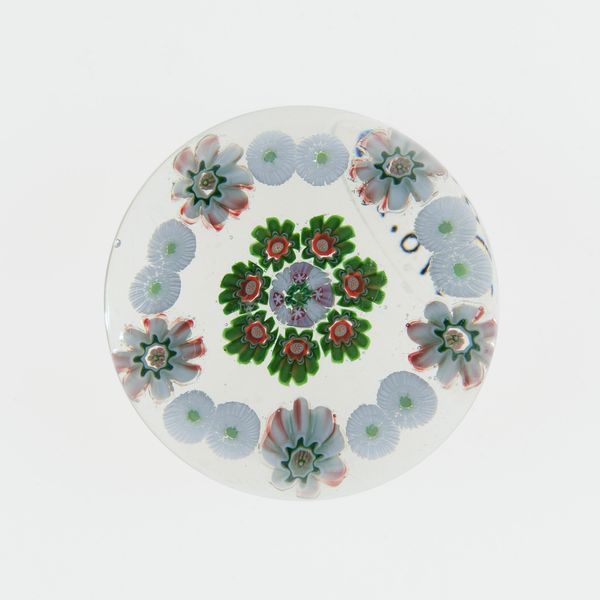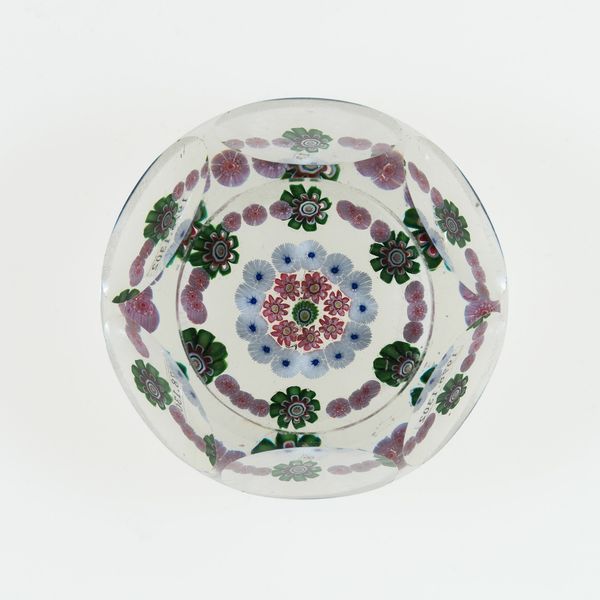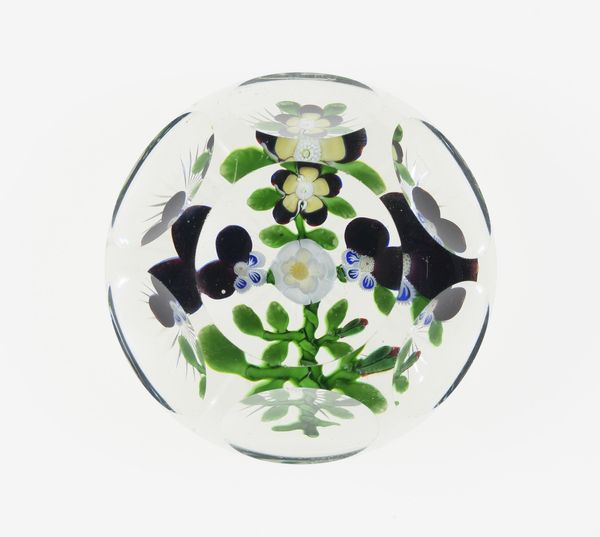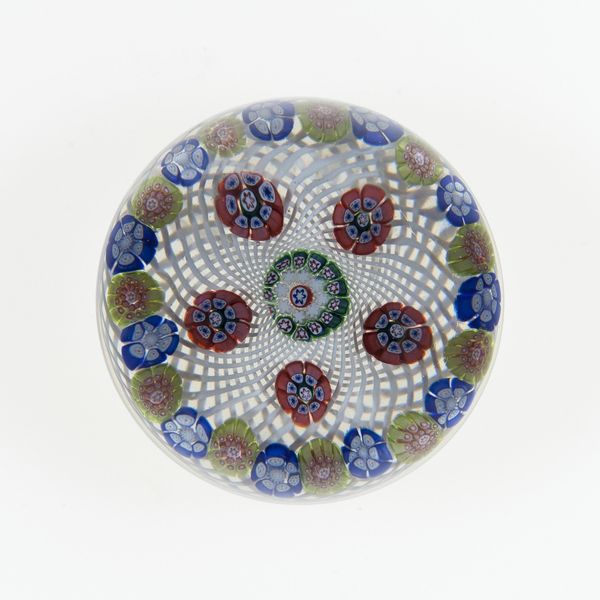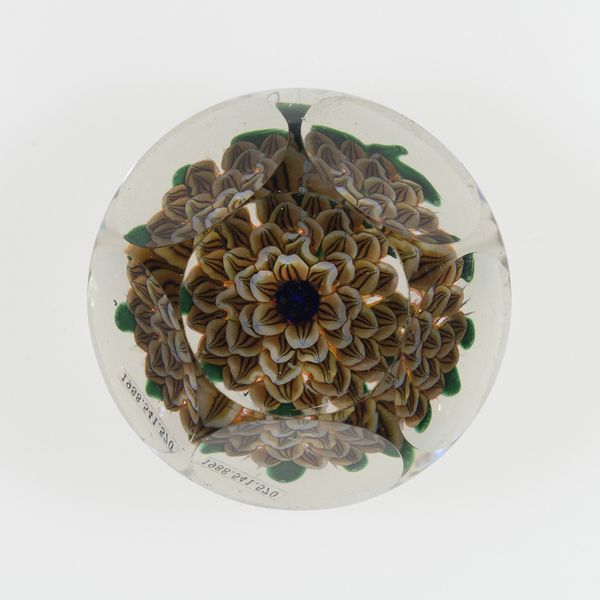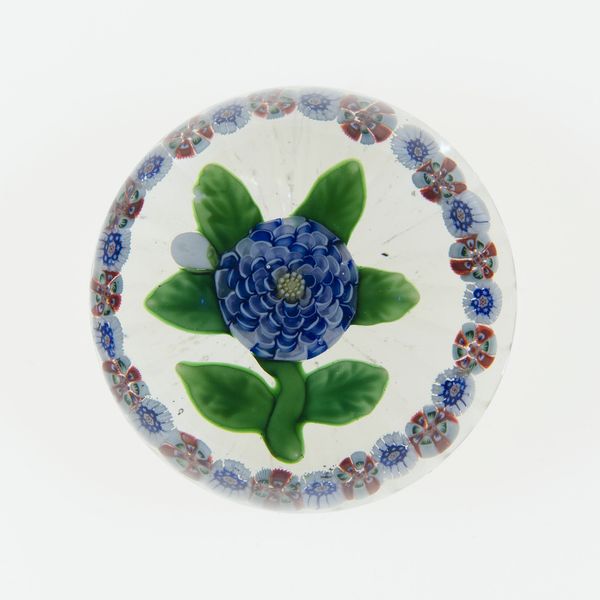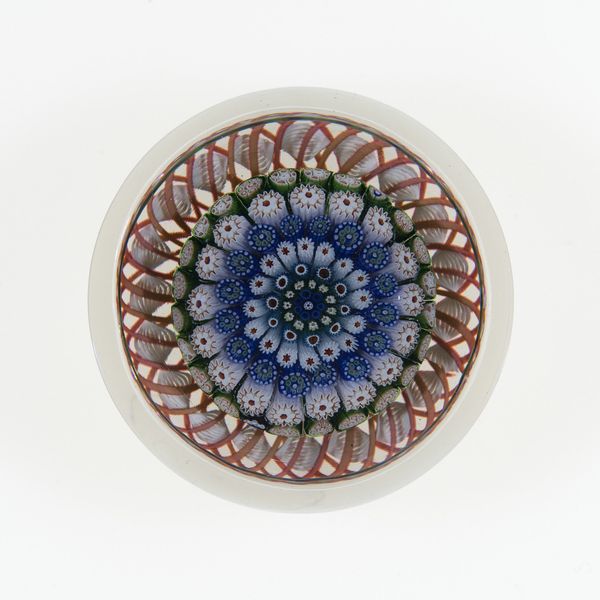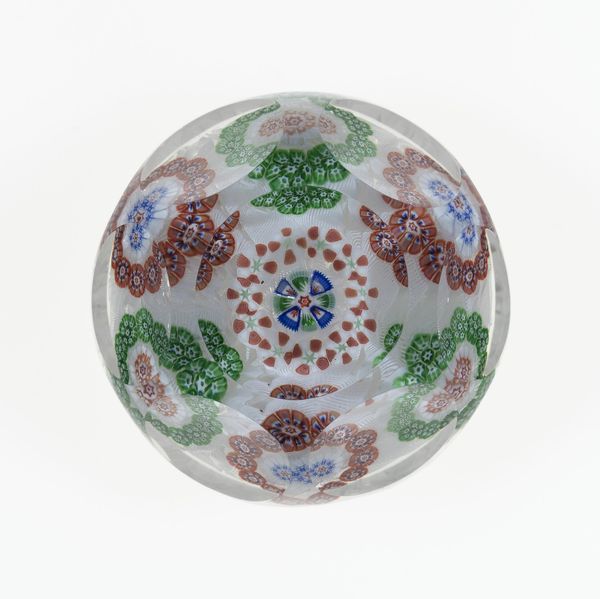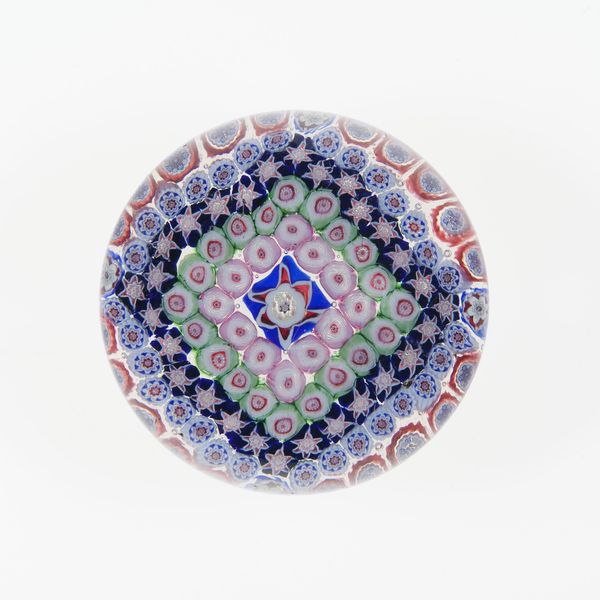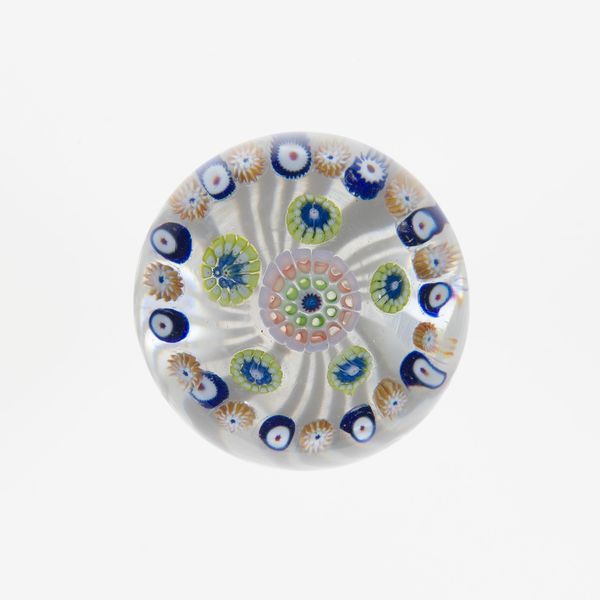
mixed-media, paper, glass, impasto
#
mixed-media
#
paper
#
glass
#
impasto
#
decorative-art
Dimensions: Diam. 9.2 cm (3 5/8 in.)
Copyright: Public Domain
Curator: Ah, the "Paperweight," a beautiful example of 19th-century glasswork, created around the Clichy Glasshouse workshops, now residing here at The Art Institute of Chicago. I'm drawn to how such seemingly simple object encapsulates so much artistry. Editor: My first thought? It's enchanting! The way the floral design is suspended within the glass—it’s like looking into a miniature, perfectly preserved world. What's more striking to me is the use of glass as the primary medium, really defining its own kind of space. Curator: Precisely! The craftsmanship is exquisite, isn't it? Consider the layers, the material itself, a combination of paper, mixed-media and impasto all encased in glass. This wasn't simply about function. Think about the artisans who shaped the molten glass, embedding these delicate floral arrangements with such care. Each piece like this speaks of skill, labor, and the industry surrounding decorative glass in 19th-century Europe. Editor: Absolutely, and the rise of the decorative arts at the time certainly reflects social shifts. We're moving from aristocratic patronage to a wider middle-class market eager for accessible luxury. The glassworks themselves became powerful institutions shaping both taste and desire. These weren't just beautiful objects; they were statements of aspiration and access. I would expect that a lot of time went in labor in its making. Curator: True. And consider how the advent of mass production affected this work. While not *entirely* mass-produced, innovations surely sped up certain aspects of production, impacting the lives and skills of the glassworkers themselves. I find myself pondering the impact the materials had on working-class conditions. Editor: And the role of institutions like this one, the Art Institute. Displaying "Paperweight" elevates it from mere utilitarian object to an art form, while influencing contemporary perceptions of what constitutes 'high art'. We must consider who has access to see and own art. It impacts art, artists and the way institutions view art. Curator: A perfect point, highlighting art history's intertwined nature with social and economic history! This paperweight offers more than just visual pleasure; it’s a portal into the complex realities of its time. Editor: Yes, examining this one "Paperweight" through historical and material lenses unlocks richer, layered appreciation.
Comments
No comments
Be the first to comment and join the conversation on the ultimate creative platform.
